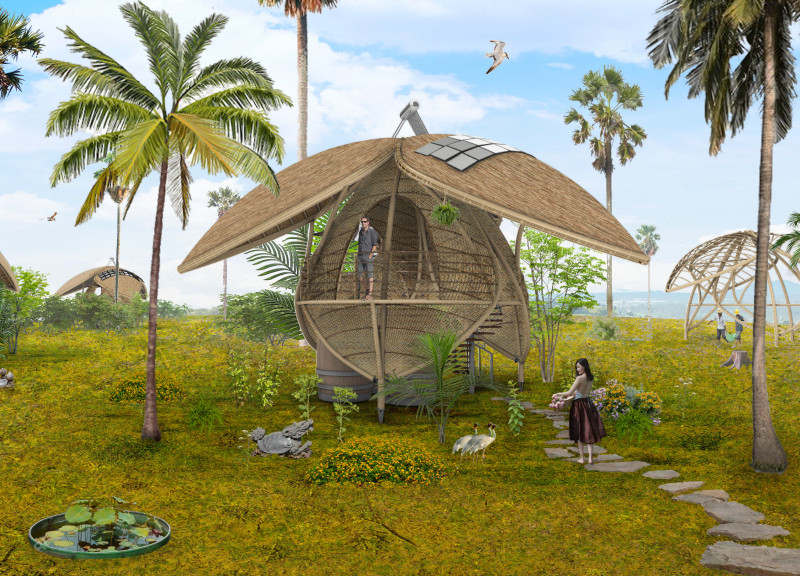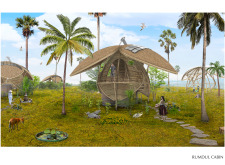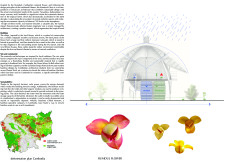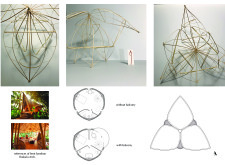5 key facts about this project
Sustainable Material Choices
The design utilizes bamboo as the primary structural element, capitalizing on its strength, flexibility, and sustainable growth characteristics. The roof features palm matting, providing insulation and a traditional aesthetic while serving practical purposes in the local climate. Photovoltaic panels are installed to harness solar energy, ensuring the cabin operates efficiently and minimizing reliance on external power sources. Rainwater harvesting systems are also integrated, allowing for effective water management, crucial in tropical environments.
Architectural Design Approach
One of the project's unique attributes is its biomimetic approach, drawing heavily from the forms and processes found in nature. The cabin’s design resembles a blooming flower, with bamboo ribs mimicking petals, enhancing both its aesthetic appeal and functionality. These structural choices facilitate natural ventilation and maximize daylight within the interior spaces, reducing the need for artificial lighting.
Flexible Spatial Configuration
The cabin is designed to accommodate varying use cases, allowing for an open-plan layout that can be adapted based on occupant preferences. The option for a balcony supports engagement with the surrounding landscape, encouraging outdoor interaction while respecting privacy requirements. Integral planters within the structure promote urban farming, offering opportunities for biodiversity and reinforcing the connection to nature.
The Rumdul Cabin exemplifies a dual commitment to local culture and environmental responsibility. Its architecture represents a convergence of traditional Cambodian elements and contemporary sustainable design practices. This project serves as a practical reference for future developments aimed at encouraging sustainable living and architecture within tropical environments.
To gain further insights into the architectural plans, architectural sections, and architectural designs that illustrate the innovative ideas behind this project, explore the detailed presentation of the Rumdul Cabin.


























